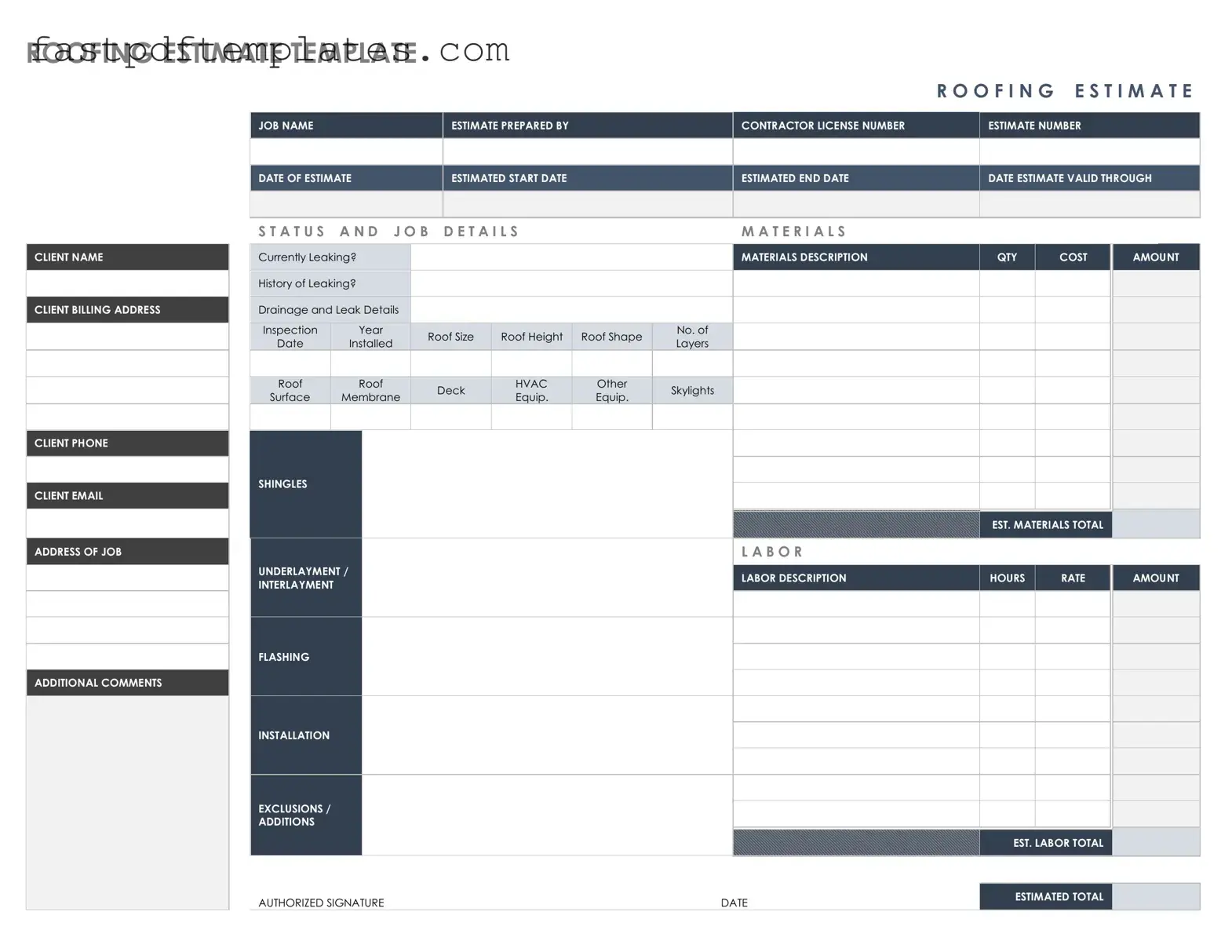The Roofing Estimate form shares similarities with the Construction Estimate form. Both documents provide a detailed breakdown of anticipated costs associated with a construction project. They typically include labor, materials, and any additional fees. Both forms serve as a basis for budgeting and financial planning, allowing clients to understand the financial implications before work begins. The clarity and specificity of these estimates help in avoiding misunderstandings between contractors and clients.
Another document akin to the Roofing Estimate form is the Home Improvement Contract. This contract outlines the terms and conditions of a home renovation project, including timelines, payment schedules, and scope of work. Like the Roofing Estimate, it aims to protect both parties by clearly defining expectations. The contract often references the estimate as a part of the agreement, ensuring that all parties are aware of the costs involved.
The Repair Estimate form is also similar to the Roofing Estimate form. It provides an assessment of costs for repairs needed on a property. Both documents require detailed descriptions of the work to be performed and the materials needed. Clients can use these estimates to compare prices and services offered by different contractors, facilitating informed decision-making.
In addition, the Bid Proposal form resembles the Roofing Estimate form in its purpose of soliciting work. Contractors use bid proposals to present their pricing and service offerings for specific projects. Like the Roofing Estimate, a bid proposal includes detailed pricing information and project scope, allowing clients to evaluate multiple bids before selecting a contractor.
The Insurance Claim Estimate is another document that shares characteristics with the Roofing Estimate form. When property damage occurs, an insurance claim estimate outlines the costs associated with repairs needed to restore the property. Both documents focus on providing a comprehensive view of expenses, ensuring that all necessary repairs are accounted for, which is crucial for both the property owner and the insurance company.
The Scope of Work document is similar in that it outlines the specific tasks to be completed during a project. While it may not always include pricing, it details the work involved, timelines, and responsibilities of the parties. This document, like the Roofing Estimate, helps to set clear expectations and serves as a reference point throughout the project.
Lastly, the Project Proposal form is comparable to the Roofing Estimate form in its function of outlining a project plan. It typically includes an overview of the project, estimated costs, and timelines. Both documents aim to provide a clear understanding of what the project entails, ensuring that all parties are aligned on the objectives and requirements before work commences.

